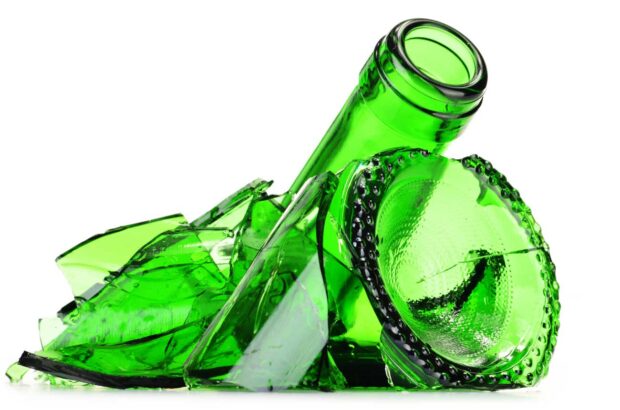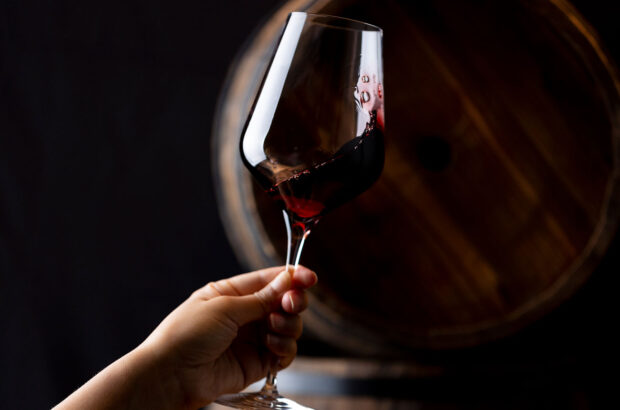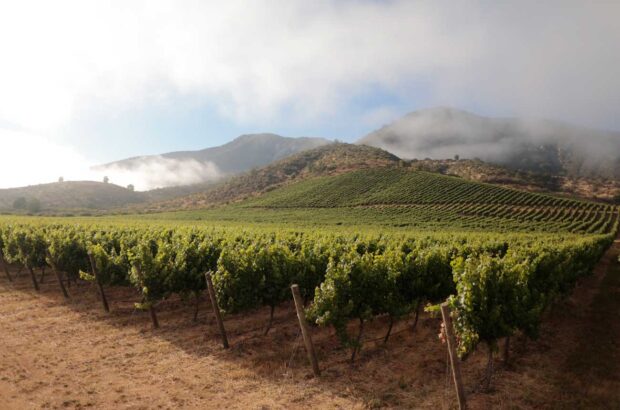Over the past 25 or so years, there is probably no subject I have been asked about more frequently than when to drink specific wines, which vintages are ‘must buys’, and which are best avoided. If only it were so easy. In fact, not just the vintage, but grape types and mix, picking dates, specific soils and microclimates, individual skill level and financial resources all play a role in determining just how successful any single wine might be. Thinking in terms of ‘great’ and ‘poor’ vintages alone is misleading, because there are many delicious wines made in off-vintages.
Choosing good Bordeaux wines in off-vintages requires a little homework. Knowing a little about a vintage’s weather pattern during the growth cycle (roughly, April through September) is crucial, and picking dates are important too. For example, 1964 was ruined by late season rains, but Lafon-Rochet made a memorable wine because it picked before the rains came.
The track record of individual châteaux is also important. Estates will go through tough spells and in those times, even wines from great years are average. Changes in ownership or the consultant winemaker greatly influence quality, as do any financial problems the estate might be facing. Estates on a roll will make above-average wines even in weather-challenged vintages. Clearly, it’s costly to make even acceptable wine in poor years. The threat of torrential downpours might require more pickers and overtime to help bring in grapes before the rains. That extra manpower is costly: wealthier estates have an advantage because they can take actions necessary to make the best wines possible without cutting corners.
The unheralded Bordeaux years of 2007, 2002, 1999, 1997 and 1994 are a case in point. Many wine lovers bypass these wines altogether, mainly because of negative publicity derived from these years being associated with ‘poor’ vintages. I think this is a pity, and many in Bordeaux agree.
Hélène Génin, Château Latour’s technical director, believes there are common points between the five vintages, such as early growth cycles, perturbed flowering and problems with fruitset and the uneven size of berries. ‘All required heavy green harvesting and careful triage of berries, so the wines resemble each other in some respects, although each vintage has its own personality.’ Despite tricky conditions, she says, ‘the wines are better than most people think’.
Nicolas Thienpont, technical director at Pavie Macquin, feels that 1997 and 2007 were both saved by late season sunshine, and finds the wines resemble each other most. Jean-Claude Berrouet of Pétrus and Eric Perrin of Carbonnieux feel 2002 is slightly underrated, characterised by lovely, gentle wines. Overall, I find most wines from these years to be either perfect for current drinking or shaping up to be delicious. Here I will discuss a few wines of leading châteaux from these vintages: ugly ducklings once, many have turned into beautiful swans.
Why you shouldn’t write-off Bordeaux 2007
The 2007s are elegantly styled wines lacking in density, but over the years they have developed far better than I anticipated.
An extremely hot April (the warmest month of the growing season until September) led to early flowering, but rain during the second half of May and early June caused poor and irregular furit-set and ripening. A cold, wet summer didn’t help matters: the best wines were made by estates that crop thinned twice, both early (eliminating grapes hit by mildew) and late (through the summer) in order to get their fruit ripe by the end of the season. Mercifully, clear skies and sunny and breezy we at her in most of September and October allowed grapes to hang longer and ripen more. Avoiding overextraction led to attractive wines with reasonably supple tannins.
The best wines are found on the Left Bank. For those without cashflow problems, Haut-Brion may be the wine of the vintage: sweet, suave and pliant, it has lovely ripeness without any green notes. Château Margaux is also a knockout: aristocratic and classy, without being especially big. Latour is still backward, but pure and powerful (‘juicier and longer than people think,’ says Génin). Silky and sweet, Mouton-Rothschild showcases its exotic nose of sweetly spicy blackcurrant and graphite.
Don’t miss out on the wonderful and affordable Branaire-Ducru: smooth, dense and balanced, it’s a real surprise. Suave and surprisingly ripe, Léoville-LasCases has medicinal aromas of cassis and liquorice. Pape Clément exudes blackcurrant, smoke and peppery spices. Giscours is austere at first, then smoothens with aeration. Pontet-Canet is nowhere near the quality of the underrated, great 2008, but is dense with intense dark fruit flavours. In the Graves, Domaine de Chevalier offers lovely if straightforward autumnal aromas of blackcurrant, faded violet and peppery tobacco leaf.
Right Bank wines are a little dilute, but some estates shone. La Mondotte is rich, plush and sweet but not heavy; Pavie Macquin is less concentrated than usual; it still needs to shed strong torrefaction aromas. Pavie Decesse is juicy and very intense, with restrained sweetness but terrific focus and grip to the mineral and cassis flavours, finishing just a wee bit tannic. Pétrus offers subtle red fruit, violet, pipe tobacco and fine-grained tannins (darker fruit notes emerge with aeration). Inky black cherry, liquorice and a whiff of roasted meat characterise Ausone, which is maybe just a little too energetically extracted for the vintage. L’Eglise-Clinet combines lovely sweetness with terrific verve, though it’s clearly not the richest version of this wine.
General drinking window: 2015-2018
Why you shouldn’t write-off Bordeaux 2002
June, July and August were cooler than normal, but September was sunny and warm, with a drying wind from the north-east that concentrated grape sugars. Due to cool summer nights, musts were high in acidity, and the combination of high acid levels with noteworthy tannins explains why many 2002s, fruit-challenged to begin with, come across as lean and tough. Initially, prices were also too high for the quality in the bottle, but some delicate, gentle beauties have emerged in time.
Domaine de Chevalier is beautifully balanced, with subtle notes of black cherry, forest floor, ink, liquorice and minerals. With its silky texture, this is ready to drink now. A real star is Léoville-Poyferré (75% Cabernet Sauvignon, but with a percentage of very brightly acid Petit Verdot providing lift), which has rare flesh for a 2002. Gruaud-Larose has spicy plum and cocoa aromas, lifted by floral and minty notes, but I doubt there’s enough fruit here to support the tannins further. At 3.67pH, Lynch-Bages doesn’t surprise – its high-toned aromas of red cherry, menthol and spice cake turn a little austere in the mouth, showing a cooler green streak to the flavours of herbal cherry and coffee.
Château Margaux offers inky aromas of blackberry liqueur, violet and minerals and is just a bit lean. Mouton Rothschild has 77% Cabernet Sauvignon and a bit too much oak, but the floral aromas of cassis, graphite and violet are lovely. Knockout aromas of cassis, violet and spices characterise Léoville-Las-Cases, also showing a strong floral Cabernet character. Cos d’Estournel has only 58% Cabernet Sauvignon and offers firm tobacco and spice notes. Pichon Lalande and Langoa-Barton have excellent clarity and sweetness. At 54% Cabernet Sauvignon, Lagrange seems lightish, but also pretty and balanced, with fine tannins. Carbonnieux is easy-going and accessible.
On the Right Bank, Vieux Château Certan is perfumed, racy and precise. Top-heavy in Cabernet Franc (75%), Le Dôme displays perfumed strawberry, violet and bitter chocolate, finishing a bit chewy. Angélus has superb density for the year. Canon-la- Gaffelière is fleshier than most, and expressive.
Valandraud (70% Merlot) is reasonably sweet, rich and broad for the vintage. Only 41% of the total production made it into the grand vin at Cheval Blanc in this vintage, and you can tell: a roughly 50/50 blend of Merlot and Cabernet Franc, it is cool, perfumed and fresh and surprisingly good.
Given the 2002 weather, Pétrus is a work of art (I actually much prefer it to the hot 2003): it’s scented, subtle and balanced. Fresh and simple, Larcis Ducasse is a very good buy.
General drinking window: 2015-2025
Why you shouldn’t write-off Bordeaux 1999
This is a vintage of early-maturing wines offering easy accessibility today.
Unfortunately, what had been a potentially very promising vintage was ruined by rain at harvest time, and this is especially true of the Right Bank (where hail also got in on the act, ravaging parts of St-Emilion in early September). July and most of August were cool and damp, and vineyards carrying heavy crop loads were vulnerable to oidium, mildew and grey rot. Warm weather began in mid-August and lasted through 12 September, allowing skins to ripen to the point where the 1999 wines rarely show green or vegetal streaks.
Left Bank wines are generally viewed as more successful, mainly because the storms of 26 August and 5 September spared the Médoc as well as the Graves. St-Emilion seems more successful than Pomerol, and Margaux’s well-draining soils fared well on the Left Bank. In 1999, the quality gap between top estates and smaller, less famous ones is especially evident. Latour is remarkably good in 1999, with earthy, spicy aromas and flavours, lovely balance and silky tannins. Also good is Gruaud-Larose, with hints of game and mineral spiciness. Lafite-Rothschild is floral and minerally, with a firm spine of acidity. I find Haut-Brion, a wine I love almost every vintage, slightly disappointing, with reticent, herbal aromas and flavours. Lynch-Bages has good inner-mouth perfume and energy; a lovely wine that lacks only the power of the best vintages.
Haut-Marbuzet is sappy and silky. Ducru-Beaucaillou is a very floral midweight wine, understated but classy. Nicely defined and firm is a very stylish Sociando-Mallet. I also liked the luscious Malescot-St-Exupéry, sweeter and suaver than most Médoc wines in almost any vintage.
The Right Bank has delivered many outstanding wines. Le Pin is a heavily torrefacted but compellingly sweet wine, still youthfully chewy and in need of another six or seven years in the cellar. Pavie seems to be especially balanced, with notes of musky espresso and roasted meat, and well-integrated oak. At around 60% Merlot and only 40% Cabernet Franc, Cheval Blanc is round and ripe but not heavy. I believe it might have been even better with more Cabernet Franc in the blend (in fact, the estate’s second wine, Le Petit Cheval, was 61% Cabernet Franc – with 2% Malbec! – and is pretty amazing: grab all you can). Dense and sweet, Lafleur has liqueur-like aromas of red cherry, roasted plum and minerals. Figeac used three new Radoux oak vats (out of 10) in 1999, and a roasted, spicy complexity is still evident today, but it comes across as juicy and fresh, if light.
General drinking window: 2015-2025
Why you shouldn’t write-off Bordeaux 1997
June and July were generally hot and humid (June especially), and botrytis and mildew were problematic. August started very hot too, but huge amounts of rain fell in the last week, bloating the grapes, while most of September was warm and sunny. In the words of Jean-Claude Berrouet: ‘If grapes don’t ripen, there’s not much you can do then’. With few exceptions, I doubt the 1997s will improve further, and would recommend drinking them up for maximum enjoyment.
Still, there are many solid current drinking options for savvy buyers, classic lead pencil and leafy Bordeaux that pair magnificently with grilled and roast meats. Haut-Brion is a lovely, well delineated if slightly simple wine. Léoville-Las-Cases is almost as good, with expressive aromas of smoked plum, roast coffee, and hints of cedar. La Mission Haut-Brion is perfumed and round, with attractive flavours of red fruits and tobacco. Montrose has deep aromas of raspberry, smoke, leather and earth, and is aromatic in the mouth.
General drinking window: 2015–2018
Why you shouldn’t write-off Bordeaux 1994
Hot on the heels of three poor years (1991, 1992 and 1993, though the last of those offers some good wines), the 1994 vintage was generally overrated during the primeurs. That said, there are some lovely wines to enjoy, mainly now. Spring was cool and wet, while summer was warm, sunny and dry. Unfortunately, starting 7 September, torrential rains came and basically never let up, though temperatures were such that rot never became a problem. The Right Bank is generally better than the Left Bank, where wines are almost uniformly characterised by green notes and are fairly austere and tough. The Right Bank’s saving grace was its Merlot, partly harvested before the rains hit.
Léoville-Barton is still lovely today, with sweet spicy notes adding to the savoury, meaty mouthfeel. Lafon-Rochet is almost creamy and supple, and is drinking beautifully. Haut-Bailly is classic and pure, with lots of stony minerality. Valandraud is smooth and spicy, with reasonably soft tannins. Tertre Roteboeuf is chocolatey and almost rich for the vintage, and relatively young.
Last but not least, though 1994 is considered a poor year for Sauternes and Barsac, Coutet is lovely – perhaps a bit chunky in its richly textured delivery of candied apricot, marzipan and pineapple nectar aromas and flavours, but rich and satisfying. Foie gras, anyone?
General drinking window: 2015-2020







